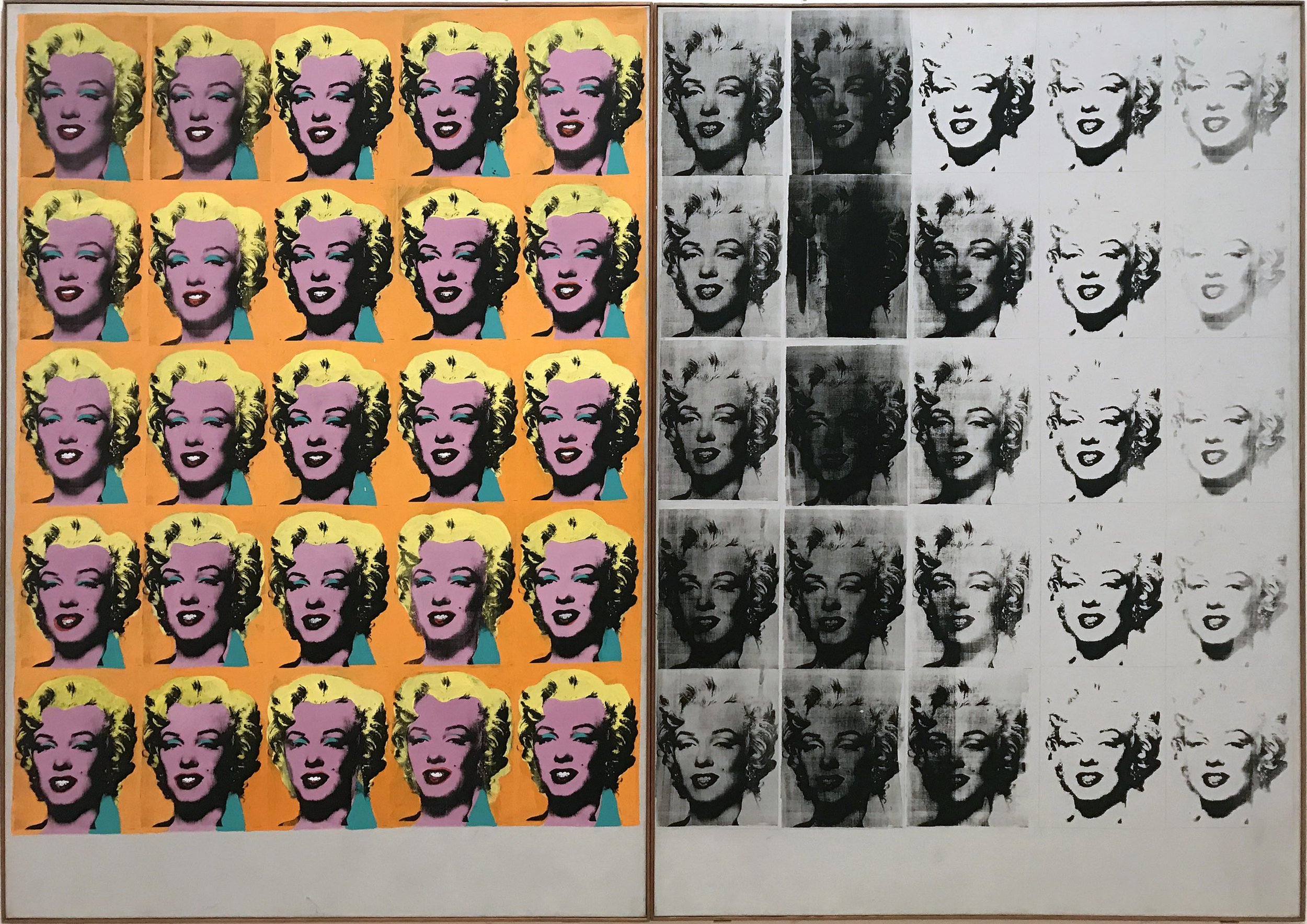Synthesizing Pop Culture and Defining Art
Andy Warhol (1928-1987) was known for creating art inspired by American pop culture of the twentieth century. One of his most famous works, Marilyn Diptych, comments on our societal obsession with celebrity, beauty, and public image. If he were living today, Warhol himself would probably disagree with statements about the meaning of his art or the depth of his intellect, “If you want to know all about Andy Warhol, just look at the surface of my paintings and films and me, and there I am. There’s nothing behind it.” (Warhol, The East Village Other, 1966). However, by all historical and theoretical definitions, Marilyn Diptych is art.
Publicity portrait of Marilyn Monroe as Rose Loomis in the 1953 film Niagara, 1953
“The more you look at the same exact thing, the more the meaning goes away, and the better and emptier you feel.”
Warhol “used a publicity photo for her 1953 film Niagara as the source image.” (Tate) This photograph was taken at the height of Monroe’s cultural influence and captures the American ideals of beauty, femininity, and sexuality of the 1950s. Warhol’s technique of reproducing this image with silkscreen ink and acrylic paint on canvas does much more than simply make a copy. Warhol’s Americanism, and lifelong romance with fashion, Hollywood, and unattainable beauty are synthesized in this repeated imagery. The sheer act of choosing this photograph, physically reproducing this image, applying color, and arranging the work in a visual series is evidence of human creation. “Like our notion of Art, photography and the creation of mass media are phenomena unique to modernity.” (Staniszewski, 77) Those choices, the subject, and the meaning we assign to celebrity in our culture is the definition of art in modern times.
The twentieth century defined celebrity and the power that fame can wield upon the hearts and minds of Americans. During Warhol’s life he was bombarded with advertisements in print, film, and later, on television. The modern world was filled with images of Marilyn during Andy’s youth, and when she died unexpectedly in 1962, it certainly would have felt like the end of an era, and the tragic end of a person he idolized repeated relentlessly in the press.
For some, fine art is defined by the old masters, these naysayers would argue that Warhol isn’t an artist, and that his work can’t be compared to paintings from the Renaissance that shaped our philosophical understanding of humanity. However, art can be defined as “the expression or application of human creative skill and imagination, typically in a visual form such as painting or sculpture, producing works to be appreciated...” (Pearsall et al.), then clearly the Marilyn Diptych is a work of art that represents a period of enlightenment about the perils of fame. When Warhol states, “The more you look at the same exact thing, the more the meaning goes away, and the better and emptier you feel." (“Andy Warhol. Marilyn Monroe. 1967 | MoMA”) he is revealing the true meaning of this work, a requiem for a woman who represented a dream that could never be realized. Is this so different from the importance of humanity romanticized by the old masters?
Citations:
Tate. “‘Marilyn Diptych‘, Andy Warhol, 1962 | Tate.” Tate, www.tate.org.uk/art/artworks/warhol-marilyn-diptych-t03093.
“Andy Warhol | the Andy Warhol Museum.” The Andy Warhol Museum, www.warhol.org/andy-warhols-life.
Staniszewski, Mary Anne. Believing Is Seeing: Creating the Culture of Art. 1995, ci.nii.ac.jp/ncid/BA25014100.
Pearsall, Judy, et al. “Oxford Dictionary of English.” Oxford University Press eBooks, 2010, https://doi.org/10.1093/acref/9780199571123.001.0001.
“Andy Warhol. Marilyn Monroe. 1967 | MoMA.” The Museum of Modern Art, www.moma.org/collection/works/61240.

